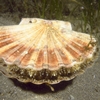General Description
The shells of this species are solid, somewhat inflated, exterior dirty white, interior white, internal ligament narrow, hinge teeth not grooved. Shell up to 3 cm across.
Biology
This species can occur in great numbers in suitable habitats, such as estuaries and mud flats. It is often found in areas with other bivalves. Some of its predators include snails living in the sand. Related species from New Zealand are larger and commercially harvested.
Habitat
In sand and mud areas.
Soft substrates
Distribution guide
Southern Australia.
Species Group
Sea snails and shells › Bivalves
Depth
Water Column
Max Size
3 cm
Diet
Organic matter
Commercial Species
No
Global Dispersal
Recorded in Australia
Conservation Status
- DSE Advisory List : Not listed
- EPBC Act 1999 : Not listed
- IUCN Red List : Not listed






